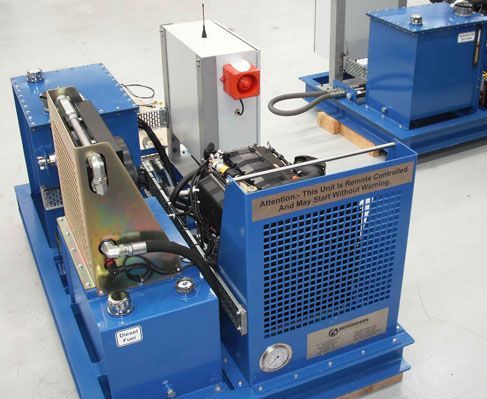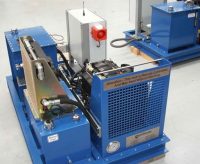Hydraulic system mistakes and oversights occur all the time. Without proper education and understanding of fluid power concepts, hydraulics is quite easy to get wrong. Being able to observe and learn from mistakes and omissions that hydraulic users make when designing and maintaining their equipment can be a difficult thing. So here are some of the most common mistakes hydraulic equipment users make, but more importantly mistakes to avoid.
1) More Flow Requires More Power – Most customers will ask for a bigger hydraulic pump because they want more flow. What they don’t realise is that a much larger pump-motor assembly will mean higher cost. You can’t get something for nothing, so for any given combination of pressure and flow requires enough input horsepower to accommodate. Therefore, if you increase flow and/or pressure, the input power required will also increase. More power will usually mean a new motor.
2) Confusing Flow and Pressure valves – This error is somewhat common because of the dynamic relationship between pressure and flow. Installing a relief valve inline that is used to control flow will work in some cases, but is terribly inefficient and creates more heat than anything. Also, when a flow control valve is installed inline, and especially if you have a constant flow pump, setting changes have an effect on backpressure. To the untrained, this could appear as though the flow control valve is used to regulate pressure. However, these are two different valves for a reason, so if you don’t know how to apply them speak to us at Berendsen Fluid Power.
3) Incorrectly Sized Double Acting Hydraulic Cylinders – Hydraulic cylinders are essential pieces of hydraulic systems, however, if not adequately sized for the given application they will not be capable of doing the job asked of it. Not understanding how a rod affects the performance of double acting cylinder is a common mistake. Quite simply a cylinder retracts with less force than it extends. The rod takes up area on the piston, reducing the surface to which pressure can act, reducing force. Furthermore, because the rod takes up volume within the rod side of the cylinder, the cylinder fills more quickly upon retraction and hence retracts much faster than it does in extension.
4) Misconception That a Bigger Hydraulic Pump Gives More Force – Hydraulic pump size has nothing to do with how much force a cylinder is capable of producing. If you want more force, you need to generate more pressure within the system or use larger actuators. Bigger pumps only produce more flow, and it should be remembered that flow is the time component of the fluid power equation. Force is only achieved through pressure, and in fact, pressure is force.
5) Changing Oil Filters – If you change them based on schedule, you’re changing them either too early or too late. If you change them early, before all their dirt-holding capacity is used up, you’re wasting money on unnecessary filter changes. If you change them late, after the filter has gone to bypass, the increase in particles in the oil quietly reduces the service life of every component in the hydraulic system. The solution is to change your filters when all their dirt-holding capacity is used up, but just before the bypass valve opens. This requires a mechanism to monitor the restriction to flow (pressure drop) across the filter element and alert you when this point is reached. A clogging indicator is a device mostly used, however, a better solution can sometimes be a continuous monitoring of pressure drop across the filter.
6) Running Systems too Hot – Few equipment operators continue to operate an engine that is overheating. Unfortunately, the same cannot be said when the hydraulic system gets too hot. But like an engine, the fastest way to destroy hydraulic components, seals, hoses and the oil itself is high-temperature operation. How hot is too hot? It depends mainly on the viscosity and viscosity index (rate of change in viscosity with temperature) of the oil, and the type of hydraulic components in the system. As the oil’s temperature increases, its viscosity decreases. Therefore, a hydraulic system is operating too hot when it reaches the temperature at which oil viscosity falls below that required for adequate lubrication. A vane pump requires a higher minimum viscosity than a piston pump, for example. This is why the type of components used in the system also influences its safe maximum operating temperature.
7) Not Using the Correct Hydraulic Oil – The oil is the most important component of any hydraulic system. Not only is hydraulic oil a lubricant, it is also the means by which power is transferred throughout the system. It’s this dual role which makes viscosity the most important property of the oil, because it affects both machine performance and service life. Oil viscosity largely determines the maximum and minimum oil temperatures within which the system can safely operate. If you use oil with a viscosity that’s too high for the climate in which the machine must operate, the oil won’t flow properly or lubricate adequately during cold start. If you use oil with a viscosity too low for the prevailing climate, it won’t maintain the required minimum viscosity, and therefore adequate lubrication, on the hottest days of the year.
So if you are experiencing similar mistakes or seeking a hydraulic solution for any other problem, you can get help by speaking to the experts at Berendsen Fluid Power.


